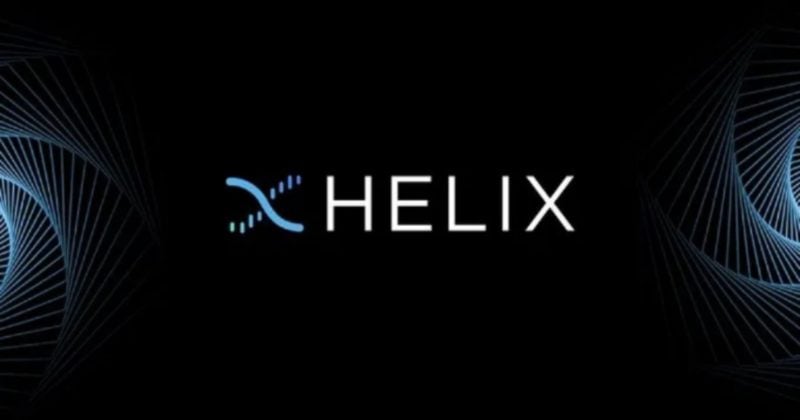In Wednesday’s issue of the Daily Disruptor, I mentioned that one of my favorite films is The Matrix.
Apologies for spoiling a movie that’s been out for more than 25 years, but its most memorable moment comes when Neo discovers the truth about his world.
It isn’t real.
It’s a simulation — a perfectly rendered copy of reality, built to predict and control everything within it.
Now something similar is starting to take shape in our world.
I was at Nvidia’s GTC conference in Washington, D.C. last month when Nvidia CEO Jensen Huang took the stage to announce a new partnership with Palantir Technologies.
Together, they’re building what they call an Operational AI Stack.
This is a system designed to help businesses model, simulate and optimize the physical world in real time.
You can think about it as the next layer of the digital economy.
It’s software that doesn’t just analyze data but helps steer the world it describes. In other words, it’s an operating system for reality.
And the first companies that plug into it could gain an advantage that’s almost impossible to overtake.
From Dashboards to Digital Twins
One of the first companies to test this new stack is Lowe’s.
Inside Palantir’s platform, the home-improvement giant is building a digital twin of its global supply chain. Every product, every store and every shipment exists as a digital object in this new system.
So if a shipment is delayed or a region runs low on inventory, the AI can instantly reroute deliveries, rebalance inventory or run thousands of simulations to find the best outcome before a manager even picks up the phone.
It can even do things like simulate how a storm in Florida might affect stores in Ohio.
That’s the big difference between traditional analytics and what Palantir and NVIDIA are building now.
The old tools told you what went wrong. But this new one will help steer the next move while you’re still reading the report.
So how does it work?
Palantir provides the brain. It’s built on something the company calls an “ontology,” which is a fancy term for a map of how everything inside an organization connects.
For example, in business terms, a “truck” isn’t just a vehicle. It has an assigned driver, a cargo manifest, a destination, a maintenance record and a GPS signal. All these pieces of data are connected in Palantir’s ontology, which means the system can reason about them.
So if a driver calls in sick, the software doesn’t just see random data. It understands what this issue means for the entire operation and can suggest or even execute the next move to alleviate any problems. The system knows which deliveries will be late, which stores will run low and what changes to make to avoid a shortage.
Meanwhile, Nvidia provides the hardware and computational muscle. Its new Blackwell GPU architecture is 30 times faster and 25 times more energy-efficient than its predecessors, with up to 10 terabytes per second of bandwidth connecting chips.
That’s what allows the system to think and act in real time, across millions of connected objects.
Combined with NVIDIA’s CUDA-X software and Nemotron open-model libraries, that massive thinking power lets Palantir’s algorithms update a company’s digital twin continuously.
As NVIDIA put it in its partnership announcement, they are creating: “a next-generation engine to fuel AI-specialized applications and agents that run the world’s most complex industrial and operational pipelines.”
In plain English, this means they’re building a platform that can recreate the physical world digitally, then think about it and act on it in real time.
And if that sounds like The Matrix to you…
In some ways, that is where we’re heading.
But as long as we keep a lid on the whole “killer machine” aspect of that movie, it could be a very good thing.
You see, companies use data analytics to try to turn insight into action.
But most AI projects haven’t quite got there yet. They can analyze what happened, but they don’t know what to do to take the next step.
The Operational AI Stack closes that loop. Because the model doesn’t just look backward. It continuously learns, tests and acts.
That’s what makes it “operational” AI.
In manufacturing, that means it can adjust production schedules and energy use minute by minute. In retail, it can test promotions or pricing strategies before they ever reach the shelf. And in logistics, it can predict bottlenecks weeks in advance and reroute around them automatically.
It’s like moving from forecasting the weather to being able to control the weather.
Of course, you can see how this product will have significant government and defense applications.
Palantir already works with the U.S. Army and Air Force, and NVIDIA powers much of the AI infrastructure behind national security simulations. A system that can model and respond to the physical world in real time has obvious strategic value.
But make no mistake…
The commercial opportunity here is massive too.
McKinsey estimates the digital-twin market could reach more than $48 billion by 2026, with wider adoption across industries potentially pushing that figure into the hundreds of billions into the next decade.

Source: Grand View Research
Palantir and NVIDIA want to own the rails of that growth.
Here’s My Take
In The Matrix, Neo had to choose between the red pill and the blue pill.
In 2025, the choice facing businesses is something similar. They can either choose to connect to the operational AI stack or get left behind by those that do.
Because Palantir and NVIDIA aren’t just teaming up on a product launch. They’re laying the foundation for a new kind of intelligence layer beneath the global economy.
In the near future AI won’t just be a tool that sits on top of businesses, it’ll be something that runs inside them. And once companies start trusting the decisions the AI makes, we’ll start seeing self-correcting enterprises that adapt faster than humans can manage.
That’s still in the future.
But as the line between data and decision disappears, we could find ourselves living inside systems that understand our world almost as well as we do.
A virtual simulation of the real world that responds in real time.
Regards,
 Ian KingChief Strategist, Banyan Hill Publishing
Ian KingChief Strategist, Banyan Hill Publishing
Editor’s Note: We’d love to hear from you!
If you want to share your thoughts or suggestions about the Daily Disruptor, or if there are any specific topics you’d like us to cover, just send an email to [email protected].
Don’t worry, we won’t reveal your full name in the event we publish a response. So feel free to comment away!




























